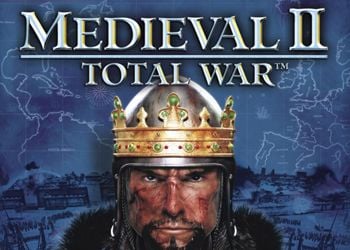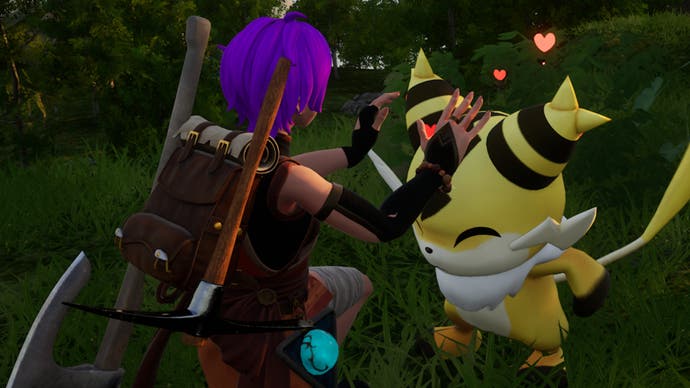Medieval 2: Total War: Game Walkthrough and Guide

The world is changing. Quite unexpectedly we understand that simple and understandable rules of the “Total War”, familiar to us on the battles of samurai in the mountains of Japan, suddenly cease to act. We hosted through medieval battles and Roman conquests to return to the European highly degree… and discover that we got into the country wonders – mysterious and frightening.
The same time – but quite differently it is necessary to develop and fight, otherwise diplomatic relations and spying should be maintained, and the one’s own state should be equipped according to quite another rules. At first, new laws of the game can shock… But this guide will give you a common picture and will prepare for a meeting with a new, unknown medieval.
Strategy
How long is short…
The main campaign mode (the only one in which the strategic part is available) is not entirely open immediately. First, you can play only for five countries – England, the sacred Roman Empire, France, Venice and Spain. The victory in the campaign for any of these countries opens Egypt, the Byzantine Empire, Mavrov, Scotland, Denmark, Portugal, Poland, Milan, Sicily, Russia, Hungary and Turkey (Naturally, conditional, as well as in the game). However, if you destroy any country in the game, it will appear among those affordable – so they can “show” by one.
For your information: If in a file medieval2.Preference.CFG You add [MISC] and on the next line Unlock_campaign = True, From the very beginning all seventeen countries will be available.
There are four more races, in the campaign inaccessible, – Aztec, Timurid Dynasty, Mongolian Horde and Paper. Behind them can be played in a separate tactical mode of the fast battle, in a multiplayer game or in a combat constructor.
In the campaign mode, you can choose the level of complexity – separately strategic and tactical. In the easy level your troops are stronger, and the people are calmer. On a complex and very difficult enemy peasants, the knights are scored, the people of the rebellion, the enemies are noticeably more warriors, no one loves the player, and luck often turns his back to him.
At high levels of difficulty in tactical battles, fatigue and martial spirit is of great importance. Developers declare that the general level of considerations at the enemy general increases, – but these words should be critically, because there are more generals to be more stupid.
At the start of the campaign, you can choose the level of help – at the highest you constantly, and in tactical, and in strategic modes will give tall heads (they can already be disabled in the game). You can enable the battle limit in time – due to some problems with “sticking” in battles, it is better to limit them (it can be turned on again in the campaign). Another item is a forced car-controlled by cities without governors. Values this item does not have any. This earlier in the cities without the governor could not be built and hiring troops at will, now only taxes are charged automatically.
Finally, each company can be passed in two versions – long and short. They differ according to the rules of victory. In a long time, it is necessary for 225 moves (450 years old – from 1080 to 1530) to conquer 45 provinces (polics) and one specific city – Jerusalem, Rome or Constantinople. In a short campaign, you need to conquer 15 provinces and destroy a certain state or even two.
The era of long-lived
In the first part of the Medieval, you can choose a time interval of three options – and if you wish to start the game right from the late Middle Ages, with gunpowder and several rebuilt provinces. Here it is impossible to do this – start to start from 1080. This means that in a short campaign you are most likely to win long before the appearance of gunpowder and even in a long campaign, energetically develop, you can meet in two or three hundred years.
For your information: If you erase the line show_years_as_turns in file Descr_strat.TXT, then with the beginning of a new campaign time will be calculated in years, and not in the goal.
Every move is two gaming years, but this does not mean that after twenty-five moves, the young prince turns into an old man. On the contrary – in the game the character may well live… Two hundred years. Two years here go for six months, and the hero, which in the game is 60 years old, was actually born 240 years ago (120 moves).
Welcome to Wonderland. Surprises are just beginning.
Gaming events
The historical events prescribed in the scripts in the game are divided into important, keywise affecting the gameplay, and on the usual signs informing about the progress of progress.
1080 – Start Campaign.
1130 (25th course) – invention mills.
1138 year (29th) – earthquake in Syria.
1044 (32 stroke) – Alchemy flourishing.
1152 year (36 stroke) – the appearance of paper in Europe.
1180 year (50th) – steering wheel.
1182 year (51 stroke) – invention of compass.
1200 year (60th stroke) – invention cars.
1202 year (61 stroke) – Understanding the concept of zero.
1208-1224 (64-72 moves) – Rumors about the invasion of Mongols. Mongols themselves appear after a few moves.
1240-1250 years (80-85 moves) – invention of gunpowder.
1268 year (94th) – earthquake in Sicily.
1280 year (100 stroke) – the first mechanical clock.
1283 year (103 stroke) – first glasses.
1302 year (111 stroke) – earthquake in Egypt.
1312 (116 stroke) – repeated earthquake in Egypt.
1314 year (117 stroke) – the ball is prohibited.
1328 year (124 stroke) – First sawmill.
1334 (127 stroke) – the first chimes.
1336 (128th stroke) – the first weather forecast.
1346 (133 stroke) – rumors about black death.
1348 (134 stroke) – the first outbreak of the plague in Europe. Repeated next three years.
1350 year (135 stroke) – the first domain furnace.
1362 (141 stroke) – Hurricane Grote Mandrenke, denoting the beginning of a small glacial period.
1368-1384 (144-152 moves) – rumors about the invasion of thymurides. After a few moves, they themselves appear.
1400 (160 stroke) – invention of a musical instrument working on the principle of piano.
1400-1408 years (160-164 moves) – rumors that the earth is round.
1420 (170 stroke) – the first painting of oil.
1444 (183 stroke) – Treatise “On Justice Scientific” Nicholas Kuzansky – Forerunner of Renaissance.
1454 (187 stroke) – invention of the printed press.
1456 (188 stroke) – earthquake in Naples.
1486 (203 stroke) – the treatise “Hammer of Witch”, which denoted the beginning of the “Witch Hunt” of the Renaissance.
1492 (206 stroke) – invention of the Ornithoper Leonardo da Vinci.
1510 year (215 stroke) – the first wrist watch.
1530 (225 stroke) – the completion of the game (it can be continued, but more inventions, historical events and new types of troops will not be.
Cities and Feodales
The system of cities in the new game was seriously processed, and they were quite logical, they divided into cities (trade centers, sciences and crafts) and castles (focus of military power).
For your information: Developers removed from the game the opportunity to take a look at their city from a bird’s eye view. Of course, this opportunity was useless, but it’s a pity anyway.
Turn the city in the castle and be back can be – but only at the initial levels of their development. Then the changes become irreversible. Budget money is mined in cities (tax levels can be configured), the citizens in the measure are expressed about the existing system. It is made in cities at first a few military detachments – the militia of a variety of types, siege tools, guns and – in the late period – powder rifle detachments. The city also specializes in agents – diplomats, spies and murderers.
For your information: The city may contain several militia detachments for a player – from two to six. This is a very convenient innovation. Learn “Free” detachment by blue rim.
In the castles, powder do not complain, but the cannons and the demand are built. Arkebuses and Musketeers Castle will not give you, but the line of real medieval detachments begins right from the peasants. Then there is a variety of infantry, equestrian detachments, archers and in general the color of medieval knighthood. The castle will not bring much money, taxes are charged on a tough dance, but also the rebel feudal peasants are not accustomed.
The game requires both cities and castles. The first – as the basis of the economy and the valuable source of diplomats / spies, the second – as the real military force of high Middle Ages. In what relationship they need? Castles can be less than cities – and it is advisable to keep them on the edge of the Empire, so that fresh knights have slept into battle. However, there are no hard rules here, it is important not to overdo it with locks. In addition, the city is needed for the guilds, and in each can only be one guild (about them below).
Line of buildings in cities and castles are extremely simple. The developers combined it in a summary list with detailed explanations – it is called through the city menu.
It is important: The line of “blacksmith” buildings supplies your troops of new armor, which looks very cool on the battlefield. But let her appearance you do not deceive – in fact, the minimal groups are protected. That is the most fashionable armor who gave the detachment of the blacksmiths, can protect worse than the “native” mail. It makes the construction of forges in many ways meaningless. The same applies to the urban line of universities – they improve quality in powder detachments… Middle Boy. Especially not lucky some Venetian detachments – improving armor simply Reduces their defense.
The principle of hiring detachments has changed dramatically. Now he resembles an old and familiar system of set of mercenaries. Simply put, now in cities and locks you can “build” or retire several detachments at once – ranging from two. Quantity depends on the size of the city. But at the same time it is impossible to collect more detachments of a certain type, which is available for hiring (usually – from two to four). If you, let’s say, “chose” all the available knights, then wait until they can again hire, have several moves.
Agents are always available one by one – this means that it is not possible to hire three spies in one city at once, and a spy, a diplomat and a killer at the same time – quite. Fortunately, agents, unlike armies, become newly available through the course.
This innovation has two goals. First, now the player can, if necessary, to assemble a large army in one move. Secondly, the player is forced to diversify his army – to assemble a dozen of the same type knights now is not so easy, especially if you consider that half of your settlements can train only the militia.
This is a bug: The game can be changed in the capital to reduce the losses from corruption and free-rope. However, I do not advise you to use this opportunity – your economy and trade due to game errors can come to chaos, and the meaning of the transfer of the capital will be lost.
We must also notice that now the hiring of detachments does not affect the population of the city. This is also a very convenient innovation – the war now does not delends the economy. But also calm the city, “resetting” its inhabitants in the peasant detachments in a clean field, now it is impossible. But this is not necessary – after complaints about the citizens Rome: Total War, the developers took the discipline, and now the townspeople walk on the string, and the feudal peasants do not reveal at all. As stated: “Esu, Milord”. However, the peasants in the new game are generally animated – but I will tell about it below, in the tactical section.
12345



